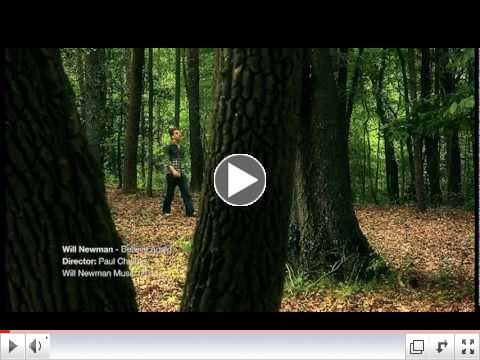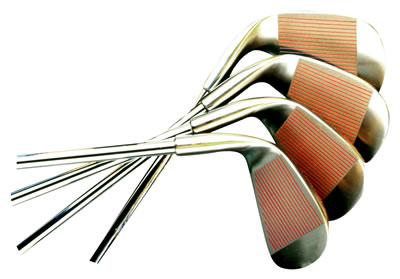|
BE SOCIAL
| |
__________________

Join our Cause
__________________

|
|
FEATURED PROJECT | |

Dr. Calin was involved in the discovery of a link between microRNAs in chromosome 13 and CLL. More recently he has been pursuing the discovery of other non-codingRNAs in trisomy 12 and 6q- abnormalities associated with CLL. Read more about his grant project here. |
|
PARTNER PERSPECTIVE | |
Follow-Up
 | |
Watch "Believe Again" written by Will and Steve Newman |
Both Tidbits and the Research Momentum have featured articles about Will Newman. He is a high school student who recorded the holiday album, Believe Again, with proceeds from album sales benefiting CLL Global.
Get in the holiday spirit while supporting CLL Global and Will! CDs make great stocking stuffers.
You can listen to and purchase the album through CDBaby.com. If you would rather write a check, contact CLL Global via email. |
|
SEASON OF THANKS, SEASON OF GIVING | |

Oh goodness, it is already that time of year again. As we enter this season of thankfulness and giving, we want you to know how much we appreciate your support. CLL Global was a concept presented by patients who saw the need for CLL specific research. For six years we have provided funding for promising avenues of CLL research with the intention of having a positive impact for you and your family as quickly as possible. While we have provided the platform to make it happen, it is you who deserves recognition for allowing us to continue solving the CLL research puzzle. |
| EXTRA! EXTRA! | |

If you are not currently receiving hard copies of CLL Global's newsletter, CLL Research Momentum, but would like to, please email us your full mailing address.
CHECK OUT THE LATEST ISSUE OF THE RESEARCH MOMENTUM (CLICK ON THE IMAGE BELOW)

|
|
QUESTIONS/COMMENTS? | |
Is there something specific you want to read and learn about?
Let us know if you have any comments or suggestions for improvement.
You are the reason CLL Global exists, and we want to hear from you.
info@cllglobal.org |
|
DONATE NOW!! | |

|
|
|
|
Greetings!
This month's issue continues our series on common chromosomal abnormalities in CLL. Below we focus on trisomy 12, the first chromosomal abnormality recognized to be associated with CLL.
A CLL Global Alliance meeting was held at the end of October in conjuction with the International Workshop on Chronic Lymphocytic Leukemia. An overview of both meetings are below. We also share another Partner Perspective story. Will Newman's holiday album, Believe Again, is on sale now! We have previously featured his story. The link to listen to and purchase this album is in the side bar. |
|
| CLL EDUCATION | |
Focus on: Trisomy 12
Trisomy 12, or the presence of an additional chromosome number 12, represents a unique abnormality in CLL. CLL cells with trisomy 12 have atypical morphological features. In other words, these cells look somewhat unusual under a microscope compared to other CLL cells and normal B-cells. The cause of this characteristic in CLL is unknown.
Prior to the development of florescence in situ hybridization (FISH) technology, trisomy 12 was the most common genetic abnormality associated with CLL. Conventional cytogenetics could more readily detect trisomy 12 than abnormalities such as 11q-, 13q- and 17p-. FISH technology has allowed researchers to better understand CLL genetics. Subsequently, trisomy 12 is no longer the most common abnormality. It currently only occurs in 15% to 20% of patients.
 | |
Image shows an extra chromosome number 12 under a light microscope. |
Some CLL patients with other chromosomal abnormalities (11q-, 13q- and 17p-) can develop clonal evolution. This means that the chromosomal abnormalities can change throughout the course of their disease. This evolution is uncommon in patients with trisomy 12. An association between trisomy 12 and other chromosomal abnormalities not generally associated with CLL (chromosomes 14, 18 and 19) has also been made, but needs to be further investigated.
Trisomy 12 is categorized as an intermediate-risk abnormality relating to likelihood of a patient's disease progressing and needing treatment, but trisomy 12 patients generally respond well to chemoimmunotherapy. Patients with trisomy 12 have an unusually high expression of CD20, a surface protein on B-cells, to CLL with other chromosomal abnormalities. (CLL is a disorder of B-cells which usually have low levels of CD20.) Monoclonal antibodies which target CD20, such as rituximab (Rituxan) and ofatumumab (Arzerra) are very effective in treating patients with trisomy 12 because of this higher expression of CD20. Studies have been conducted using monoclonal antibodies as single agents for treating CLL. However, the chemoimmunotherapy regimen fludarabine, cyclophosphamide and rituximab (FCR) presently remains superior for all chromosomal abnormalities including trisomy 12.
Current (Knowledge/Statistics) of trisomy 12*:
- Median time to treatment from diagnosis: 33 months (2 years, 9 months)
- Median overall survival (OS): 113 months (9 years, 5 months)
- Very good clinical responses and outcomes following chemoimmunotherapy with good response to treatment after relapse and long survival after relapse
- Responsive to monoclonal antibodies and lenalidomide (Revlimid)
*Based on data from the University of Texas MD Anderson Cancer Center
Going Forward:
Response to treatment, remission duration and overall survival for patients with trisomy 12 are encouraging. The focus on trisomy 12 from a research perspective will be to better understand its role in the development of CLL and to discover whether or not there is a relevant association with less common genetic abnormalities. |
| THE HAPPENINGS | | |
Highlights from CLL Global Alliance/iwCLL
The International Workshop on Chronic Lymphocytic Leukemina (iwCLL) was recently held in Houston, TX from October 28th to 30th. This biennial conference hosts researchers from all over the world, all with a dedicated interest in CLL research. At the first iwCLL meeting thirty years ago, there were only a handful of researchers attending the conference. This year almost 600 attended. There were seven sessions spread out over three days focusing on biology, prognostic factors, and current and future treatment options. Famous names in CLL research presented their latest data in their areas of expertise. Young investigators were also given a forum to present.
 | |
Drs. Peter Hillmen (Leeds, UK) and Stephan Stilgenbauer (Univ. of Ulm, Germany) at the Alliance meeting. |
With most of the CLL experts in town, this was a perfect opportunity to hold a meeting of the U.S./European Alliance for the Therapy of CLL (Alliance). The Alliance is a collaborative effort to accelerate CLL research. This select group of scientists is divided into working groups which focus on areas that have potential to advance our understanding of how to treat CLL. A one day Alliance meeting was held prior to the iwCLL. There were presentations and discussions on B-cell receptor (BCR) biology and therapy, genetically directed therapy, chimeric antigen receptors (CARs) and the feasibility of a collaborative international database. The discussion was thought provoking.
There was excitement at both iwCLL and the Alliance meeting regarding the growth of knowledge and new treatments. Yet it was also clear that the work is not complete and there are still challenges to overcome. Some patients may potentially already be cured, but only time will tell. Subgroups of CLL have been established so that researchers can focus on those in need. Promising, early results of clinical trials using new treatment strategies provide hope. New technologies and ways of thinking will carry us forward as the battle continues. |
| PARTNER PERSPECTIVE | | |
Golf Tournament raises funds for CLL Research
 Our friends in Louisiana do not rest when they are passionate about a cause. In the June issue of Tidbits, we told you about the fundraising efforts of René Uzé, owner of Forum Salon. Now, Rene's long-time girlfriend, Brenda Watson, has joined with her family, friends and colleagues to support leukemia research. Our friends in Louisiana do not rest when they are passionate about a cause. In the June issue of Tidbits, we told you about the fundraising efforts of René Uzé, owner of Forum Salon. Now, Rene's long-time girlfriend, Brenda Watson, has joined with her family, friends and colleagues to support leukemia research.
Brenda's father, Henry A. Watson, Sr. lost his battle to acute myeloid leukemia (AML) in November 2001. In 1988 Henry, Sr. founded Screening Systems International which manufactures and installs traveling water screens and other intake systems for local municipalities and corporations. The company is still run by the Watson family.
 | |
Henry A. Watson, Sr.
May 23, 1936 - November 30, 2011 |
Ten years after his passing, Screening Systems held a golf tournament in memory of Henry, Sr. The tournament took place on September 18th at Copper Mill Golf Course in Zachary, Louisiana near Baton Rouge. While it rained most of the day, there was a great turn out. They raised $7,000 to benefit both CLL Global Research Foundation and The Leukemia & Lymphoma Society. Screening Systems and the Watson family plan to make this an annual fundraiser and will continue to support leukemia research in hopes of finding a cure for all types of leukemia.
|
|
THANK YOU FOR SUPPORTING US! | | |
|
We appreciate your interest in Tidbits and CLL Global. Be happy, well and enjoy this time of thanks.

Sincerely,
CLL Global Research Foundation
|
|
|